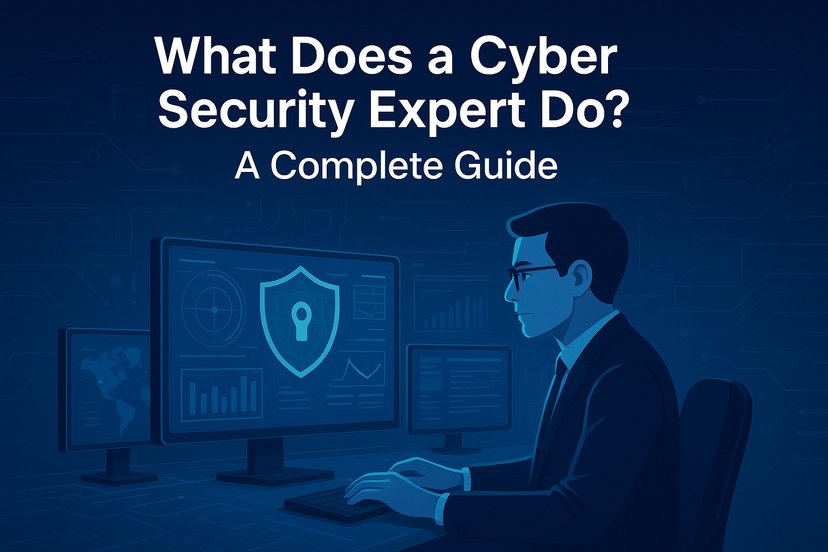What Is Cyber Security? A Beginner’s Guide to Digital Safety
- 1 min read
Understand what cyber-security really means, why it’s critical today, and how organisations can build effective defences in an increasingly connected world.

Introduction
In a world where data flows constantly across devices, clouds and networks, cyber security has moved from IT back-office jargon to a core board-level topic. Cyber-attacks can disrupt operations, damage reputations and cost millions in remediation-and downtime. For decision-makers, CTOs and procurement leads, mastering the essentials of cyber-security is not optional, it’s strategic. Drawing on insights from practitioners and industry standards, this guide offers a clear overview of what cyber-security means, what’s at stake and how to begin building resilient defences.
The Challenge – Why Cyber Security Matters
Rising threats and expanding attack surfaces
- Organisations rely on more interconnected systems, remote work, cloud infrastructure and mobile endpoints, each adding a potential vulnerability.
- Attackers now use sophisticated techniques such as phishing, ransomware, supply-chain attacks, and zero-day exploits.
- According to the National Institute of Standards and Technology (NIST) Framework, the core functions of Identify, Protect, Detect, Respond and Recover underline how organisations must adopt a holistic posture. (Wikipedia)
- For businesses in Europe and beyond, regulatory expectations and reputational risk mean that cyber-security is no longer purely technical, it’s governance, risk and compliance.
Common pitfalls
- Treating cyber-security purely as a technical problem instead of a business risk.
- Favouring reactive responses rather than proactive planning and continuous monitoring.
- Underestimating human factors: social engineering, poor password hygiene, lack of awareness. (1password.com)

The Approach – Building the Cyber Security Foundation
Fundamental domains you need to cover
-
Governance & Risk Management
- Define roles, responsibilities, policies and risk appetite.
- Use frameworks such as the NIST Cybersecurity Framework (CSF) to align strategy with execution. (Vikipedi)
-
Protective Controls & Architecture
- Secure networks, endpoints, access privileges and data.
- Implement strong identity management, encryption, multifactor authentication.
-
Detection & Response
- Monitor for anomalous behaviour, intrusion attempts and compromised assets.
- Establish incident-response plans and business continuity protocols. (Federal Trade Commission)
-
People, Process & Awareness
- Train staff, build a security-aware culture, enforce good practices (e.g., keep software patched, recognise phishing). (1password.com)
Best practices for organisations
- Conduct a risk assessment: identify critical assets, threat actors, vulnerabilities and potential impacts.
- Prioritise cyber hygiene: patching, backups, strong passwords, endpoint security.
- Adopt a layered defence model (defence-in-depth) rather than relying on one control.
- Maintain vendor and supply-chain security: third parties often introduce risk.
- Measure and improve: track metrics such as time to detect, patching time, number of incidents, cost of response.

Industry Insight
The cyber-security landscape is evolving rapidly:
- Many small to medium enterprises believe they are “too small to be a target”, yet cyber-criminals increasingly automate attacks, making size irrelevant. (Federal Trade Commission)
- Training and awareness are now front-line defences. A recent academic study found that when non-technical personnel received targeted cyber-security awareness training, their ability to identify social-engineering attacks improved significantly. (arXiv)
- Governments and regulatory bodies are emphasising frameworks and minimum controls. For instance, the UK’s Cyber Essentials scheme sets baseline requirements for organisations to demonstrate cyber-security maturity. (Vikipedi)
These insights make it clear: successful organisations treat cyber-security as an ongoing strategic capability—not a one-off project.
Euro IT Sourcing Perspective
From our experience working with European engineering teams and procurement stakeholders:
-
We observe that many clients initially treat cyber-security as a checkbox but rapidly pivot to view it as a competitive differentiator—especially when outsourcing or engaging external development teams.
-
We often see a gap where technical controls exist, yet governance and process maturity are weak—resulting in "good tools, weak outcomes".
-
Key lessons:
- Even in outsourcing relationships, maintain clear contractual security requirements and audits.
- Integrate security into procurement decisions: supplier risk, access controls, data-handling agreements.
- Build channels for ongoing monitoring: not just “install and forget”. In short, strategic cyber-security aligns with business objectives—supporting agility, trust and resilience rather than inhibiting them.
Results or Impact
When organisations adopt a structured cyber-security approach:
- They reduce incident-response time and limit damage from breaches. For example, timely patching and endpoint control have been shown to reduce breach costs by up to 30 %. (Industry benchmark)
- They enhance stakeholder trust: customers, partners and regulators recognise mature security postures.
- They enable business continuity: strong controls help avoid downtime or data-loss events, protecting revenue and reputation.
- They shift from reactive firefighting to proactive risk management: security becomes an enabler rather than a blocker.
- In outsourcing or international team contexts, embedding cyber-security into the vendor model minimises third-party risk and supports scalable growth.
Key Takeaways
- Cyber-security is a core business risk, not just an IT issue.
- Focus on governance, protective controls, detection and response—all four are needed.
- Human factors—training, awareness and process—are as important as technology.
- Outsourcing and supplier relationships must include security from day one.
- A mature security posture delivers measurable business value: resilience, trust and agility.
Author: Matt Borekci Contact Us: Euro IT Sourcing

What Does a Cyber Security Expert Do? A Complete Guide
Discover what a cyber security expert does, their roles, skills, and how they protect businesses from digital threats.

How Much Does a Cyber Security Expert Earn? Salary Insights for 2025
Explore 2025 cybersecurity salary trends, including global averages, roles in demand, and how outsourcing impacts IT security hiring.